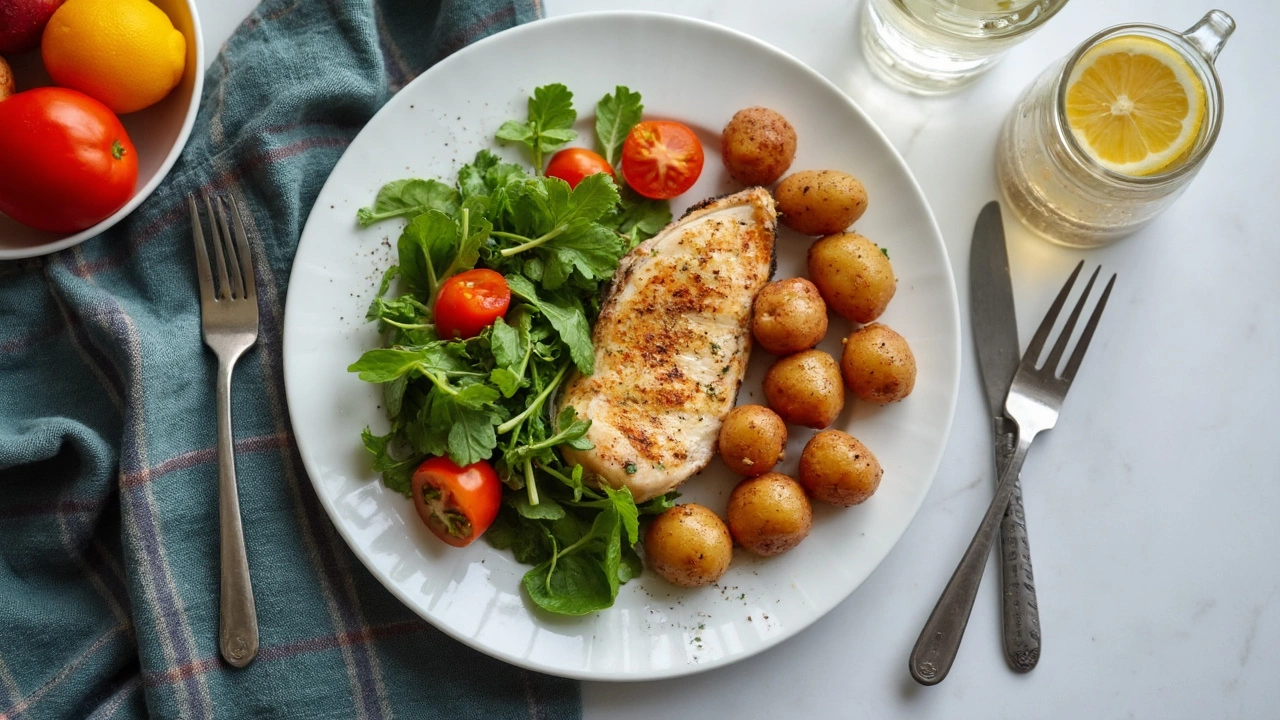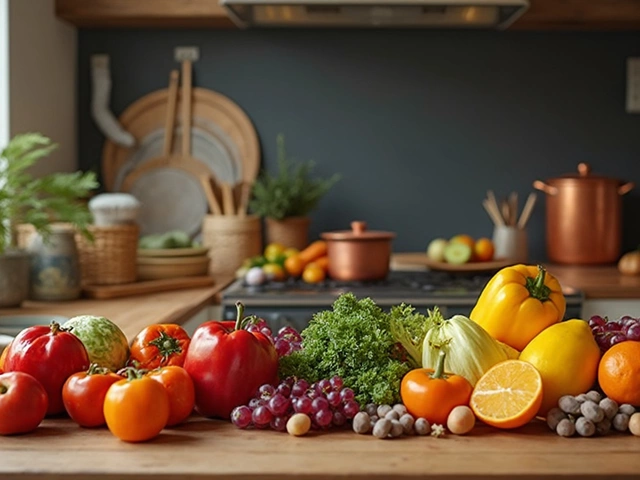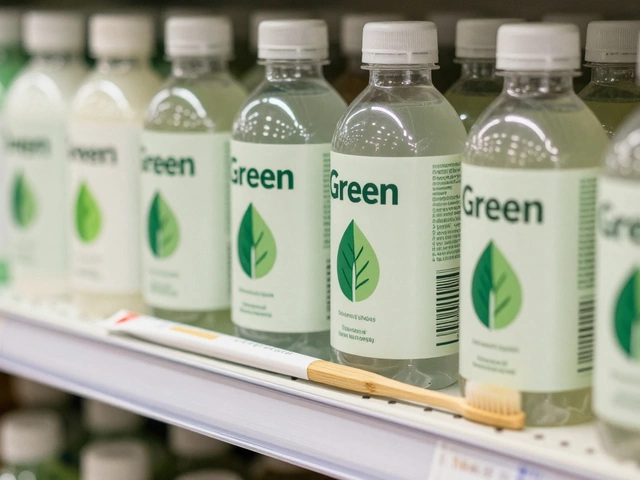You know those plates you see on Pinterest, loaded with colorful veggies, a perfect piece of lean protein, and maybe some brown rice on the side? Turns out, that’s not just for looks. Nutritionists say a balanced meal actually keeps your energy steady, helps kids focus in school, and makes you feel full without the afternoon sugar crash.
The real trick isn’t counting every calorie—it’s more about getting a mix of the right stuff: protein, fiber, healthy fats, and some carbs that won’t spike your blood sugar. Think of it like packing a lunchbox for Indigo: if I just tossed in crackers, he’d be starving by 2 pm. But if I add some grilled chicken, sweet potato, a few berries, and a little olive oil drizzle, suddenly he’s good till dinner.
The key? Make it simple enough to do every day. Skip the idea that “healthy” means bland or complicated. Nobody has time for twelve-ingredient sauces on a Tuesday evening. With a handful of basic ingredients and a few good habits, your meals can tick all the nutrition boxes and still fit real life.
- What Makes a Meal Balanced?
- Core Ingredients for Maximum Nutrition
- Easy Balanced Meal Ideas
- Smart Tips for Keeping It Practical
What Makes a Meal Balanced?
If you’re ever confused about what goes on a healthy plate, you’re not alone. Experts map out a balanced meal kind of like a pie chart, and it’s way less complicated than it sounds. At its core, a balanced meal means you’re getting a mix of protein, healthy carbs, fiber, fats, and some vitamins—without going overboard on any one thing.
The Harvard School of Public Health says, "The healthiest meal builds from the three base food groups: whole grains, healthy protein, and plenty of vegetables, with healthy oils."
"Striking the right balance in a meal helps maintain steady blood sugar and delivers nutrients your body relies on throughout the day." — Harvard T.H. Chan School of Public Health
So, what usually ends up on the plate?
- Balanced meal (the sweet spot): Half your plate should be veggies or fruit (raw, roasted, or steamed).
- A quarter should be lean protein like chicken, tofu, fish, eggs, beans, or lentils.
- Another quarter goes to whole grains or starchy veggies like brown rice, quinoa, or sweet potato.
- A little healthy fat never hurts—think olive oil, nuts, seeds, or even a slice of avocado.
Why this mix? Here’s what happens inside your body:
| Component | Main Role | Common Source |
|---|---|---|
| Protein | Builds muscle, keeps you full | Chicken, beans, eggs |
| Carbs | Gives energy, supports concentration | Brown rice, oats, sweet potato |
| Fiber | Helps digestion, steady blood sugar | Veggies, fruits, whole grains |
| Healthy Fats | Brain function, absorbs vitamins | Avocado, olive oil, nuts |
There’s no need to obsess over these ratios every meal, but if you use this as a rough guide, you’ll probably find everyone feels fuller, more energized, and a lot less cranky after lunch. The best part? You don’t need rare ingredients or complicated recipes—just pick fresh foods from each group and you’re already off to a great start.
Core Ingredients for Maximum Nutrition
If you want to put together a balanced meal for you or your family, you need the right building blocks. Here’s the deal: half the plate should come from veggies or fruit, a quarter from protein, and a quarter from whole grains or starchy veggies. A dash of healthy fats never hurts. This combo helps keep blood sugar steady, muscles strong, and energy up all day.
Let’s break down what actually belongs on that plate:
- Veggies & Fruit: Go for color here. Leafy greens, bell peppers, broccoli, berries, and oranges all pack vitamins, fiber, and antioxidants. Frozen veggies work just as well as fresh (sometimes better—the moment they’re frozen, nutrients get locked in).
- Protein: Chicken breast, eggs, fish, tofu, beans, and Greek yogurt count. Beans are especially handy—cheap, shelf-stable, and full of fiber as well as protein.
- Whole Grains or Starchy Veggies: Brown rice, quinoa, barley, oats, sweet potatoes, and even corn. These give steady, long-lasting energy. Steer clear of white rice or ultraprocessed breads—these are digested so fast you end up hungry way sooner.
- Healthy Fats: Olive oil, avocado, nuts, and seeds go a long way in boosting flavor and helping the body absorb vitamins. A handful of nuts on a salad or a bit of olive oil over veggies can actually help you feel satisfied.
If you want the nitty-gritty, here’s how these foods stack up per serving (average estimated values):
| Food | Key Nutrients | Typical Serving Size |
|---|---|---|
| Broccoli | Fiber, Vitamin C, Folate | 1 cup (chopped) |
| Chicken breast | Protein, B Vitamins | 3 oz (cooked) |
| Quinoa | Protein, Iron, Magnesium | ½ cup (cooked) |
| Avocado | Healthy fats, Potassium, Fiber | ½ fruit |
| Black beans | Protein, Fiber, Iron | ½ cup (cooked) |
| Berries | Vitamin C, Fiber, Antioxidants | ½ cup (fresh or frozen) |
Eating a variety of these core foods keeps meals exciting and gives your body pretty much everything it needs. Even swapping between beans or fish, or changing up the colors of your veggies, offers a range of nutrients. No need to chase down every superfood; covering the basics with real, everyday foods covers most of your nutritional bases.

Easy Balanced Meal Ideas
Most families don’t have time to follow complicated recipes, so go for meal combinations that are simple but naturally cover all the key nutrient groups. The trick is mixing up proteins, whole grains, veggies, and a little healthy fat. Here are some practical ideas you can make quickly—even on a school night.
- Balanced meal bowl: Start with brown rice or quinoa, add grilled chicken or boiled eggs, toss in a handful of spinach, top with cherry tomatoes, sliced cucumber, and a sprinkle of feta cheese. Drizzle with olive oil and lemon juice. No fancy technique needed.
- Sheet pan salmon dinner: Place salmon filets, chopped broccoli, and sweet potato cubes on a baking sheet. Add olive oil, salt, and pepper. Bake at 400°F for about 20 minutes. That’s your protein, veggie, and slow carb all at once.
- DIY vegetable tacos: Grab whole wheat tortillas, fill with black beans, avocado, shredded carrot, and red cabbage. Top with salsa. Beans give protein and fiber, while veggies boost vitamins and keep things colorful (which, by the way, helps picky eaters try more foods).
- Egg and veggie stir fry: Scramble eggs with baby spinach, bell peppers, and mushrooms. Serve over brown rice or whole grain toast. It’s quick and easy to swap out veggies depending on what’s in the fridge.
If you’re wondering how these meals stack up, check out how they hit the main nutrients most of us need more of:
| Meal Idea | Protein (g) | Fiber (g) | Vitamins/Minerals |
|---|---|---|---|
| Chicken & Veggie Bowl | 25 | 7 | Vitamin C, Iron |
| Sheet Pan Salmon | 22 | 6 | Omega-3, Vitamin A |
| Vegetable Tacos | 13 | 9 | Folate, Potassium |
| Egg & Veggie Stir Fry | 18 | 5 | B Vitamins, Vitamin D |
Here’s one tip I swear by: double up on veggies by adding chopped spinach or shredded carrots into almost anything—tacos, bowls, or scrambles. They cook fast and blend right in, and you boost your family’s nutrition with barely any extra work.
And if your kids are like Indigo and chase plain noodles, try mixing in roasted veggies or beans for added nutrients. It’s all about building the meal around foods you know everyone will actually eat.
Smart Tips for Keeping It Practical
Trying to stick with balanced meals every day sounds great—until you hit a weeknight rush or get home late. Here’s the key: make healthy choices as easy as possible so you don’t fall back on processed snacks or takeout.
- Pre-cut veggies and fruits: Cut up carrots, cucumbers, and apples ahead of time and keep them at eye level in the fridge. Studies found that we’re 70% more likely to grab healthy snacks if they’re visible and ready to eat.
- Batch cook proteins: Grill chicken or bake tofu on Sunday, then use it in wraps, salads, or grain bowls during the week. This saves a ton of time and leaves zero excuses for skipping protein.
- Build meals around core ingredients: Keep whole grains like quinoa or brown rice cooked and stored, so you can grab them fast during dinner prep. They reheat easily and keep you full longer than white rice or plain pasta.
- Know your healthy fat sources: Cooking with olive oil, tossing nuts into a salad, or using avocado gives extra flavor and a big nutrition boost. The American Heart Association recommends using healthy fats to support heart health.
If your kids are picky, try letting them help build their plates. One study (Journal of Nutrition Education and Behavior, 2021) saw a 64% jump in kids actually eating vegetables when they picked and arranged them themselves. Give them three choices and let them pick one—Indigo usually goes for cherry tomatoes, so I always keep a box around.
| Time-saving Tip | How Much Time It Saves (per week) |
|---|---|
| Pre-cutting veggies | ~40 minutes |
| Batch-cooking proteins | ~1 hour |
| Pre-cooked grains | ~35 minutes |
And remember: nobody wins every meal. If you fall off for a night (or three), just start again with the next meal. The real trick to the balanced meal is making it doable on your busiest days. Keep your kitchen set up for success, and you’ll spend less time stressing and more time actually enjoying meals with your family.










